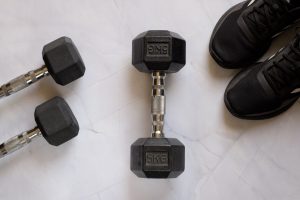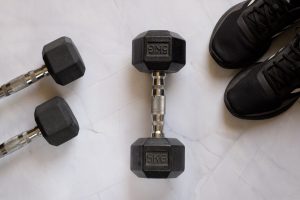Start Strong: 12 Beginner-Friendly Strength Exercises
Discover the top 12 strength exercises for beginners to boost your fitness journey. Start strong and build muscle with ease today!
Introduction to Strength Training for Beginners
Understanding Strength Training
Strength training, often referred to as resistance training, involves exercises that improve muscle strength and endurance. It is a crucial component of a well-rounded fitness regimen, offering numerous health benefits such as improved muscle tone, increased metabolism, and enhanced bone density.
For beginners, understanding the basics of strength training is essential to ensure safe and effective workouts.
Benefits of Strength Training
Engaging in regular strength training can lead to significant health improvements. It helps in building lean muscle mass, which in turn boosts metabolism and aids in weight management.
Additionally, strength training enhances joint flexibility and reduces the risk of injury by strengthening the muscles around joints. Improved posture, better balance, and increased energy levels are other notable benefits.
Getting Started with Strength Training
For beginners, starting a strength training routine might seem daunting, but it doesn’t have to be.
The key is to begin with basic exercises that target major muscle groups and gradually increase the intensity as your strength improves. It’s important to focus on proper form and technique to prevent injuries and maximize effectiveness.
Essential Equipment for Beginners
While many strength training exercises can be performed using just body weight, incorporating equipment can enhance your workouts.
Beginners might consider using dumbbells, resistance bands, or kettlebells. These tools are versatile and can be used to perform a variety of exercises that target different muscle groups.
Creating a Balanced Routine
A well-rounded strength training routine should include exercises that target all major muscle groups, including the chest, back, arms, legs, and core.
Beginners should aim to perform strength training exercises two to three times a week, allowing at least one day of rest between sessions to facilitate muscle recovery.
Importance of Warm-Up and Cool-Down
Warming up before a strength training session is crucial to prepare your muscles and reduce the risk of injury. A proper warm-up should include light aerobic activity and dynamic stretches.
Similarly, cooling down after your workout with static stretches helps in muscle recovery and reduces soreness.
Benefits of Incorporating Strength Training
Improved Muscle Mass
Strength training is one of the most effective ways to increase muscle mass. As you engage in exercises that challenge your muscles, such as those in the “12 Best Strength Training Exercises for Beginners,” your muscle fibers undergo stress and repair, leading to growth.
This increase in muscle mass not only enhances your physical appearance but also boosts your metabolism, helping you burn more calories even at rest.
Enhanced Bone Density
Regular strength training can significantly improve bone density, reducing the risk of osteoporosis and fractures. Weight-bearing exercises stimulate bone growth and increase bone strength.
This is especially beneficial as you age, as it helps maintain bone health and reduces the likelihood of bone-related injuries.
Increased Strength and Endurance
Incorporating strength training into your fitness routine enhances both muscular strength and endurance. As you progress with exercises like squats, lunges, and push-ups, your muscles adapt to handle more weight and repetitions.
This increase in strength and endurance translates to better performance in daily activities and other physical pursuits.
Improved Joint Flexibility and Balance
Strength training exercises often require a full range of motion, which can improve joint flexibility and balance. Exercises such as deadlifts and planks not only strengthen muscles around the joints but also enhance stability.
Improved balance reduces the risk of falls and injuries, particularly in older adults.
Boosted Mental Health
Engaging in strength training has been shown to have positive effects on mental health. It can reduce symptoms of anxiety and depression, improve mood, and boost self-esteem.
The sense of accomplishment from achieving fitness goals and the release of endorphins during exercise contribute to a better overall mental state.
Better Weight Management
Strength training plays a crucial role in weight management. By increasing muscle mass, you enhance your body’s ability to burn calories efficiently.
This, combined with a balanced diet, can lead to effective weight loss or maintenance. Additionally, strength training helps prevent muscle loss during weight loss, ensuring that the weight you lose is primarily fat.
Top 12 Beginner-Friendly Strength Training Exercises
1.
Squats
Squats are fundamental for building lower body strength. They target the quadriceps, hamstrings, and glutes.
Begin with bodyweight squats to master the form before adding weights.
2. Lunges
Lunges improve balance and coordination while working the legs and glutes.
Start with stationary lunges and progress to walking lunges as you gain confidence.
3. Push-Ups
Push-ups are a classic exercise for strengthening the chest, shoulders, and triceps.
Modify by starting on your knees if needed, and gradually work towards full push-ups.
4. Plank
The plank is excellent for core stability and endurance.
Maintain a straight line from head to heels and hold the position for as long as possible, aiming to increase your time gradually.
5. Bent-Over Rows
Bent-over rows target the back muscles, including the lats and rhomboids.
Use dumbbells or a barbell, keeping your back straight and pulling the weights towards your torso.
6. Deadlifts
Deadlifts are a compound exercise that works multiple muscle groups, including the back, glutes, and hamstrings.
Start with lighter weights to perfect your form.
7. Overhead Press
This exercise strengthens the shoulders and arms.
Use dumbbells or a barbell, pressing the weight overhead while keeping your core engaged and back straight.
8. Bicep Curls
Bicep curls are an isolation exercise focusing on the biceps.
Use dumbbells or a barbell, ensuring controlled movement throughout the exercise.
9. Tricep Dips
Tricep dips target the triceps and can be done using a bench or chair.
Keep your elbows close to your body and lower yourself until your arms are at a 90-degree angle.
10. Leg Press
The leg press machine is a safe way to build leg strength.
Adjust the seat and weight to a comfortable level, pushing through your heels to extend your legs.
11. Lat Pulldowns
Lat pulldowns work the upper back and shoulders.
Use a cable machine, pulling the bar down towards your chest while keeping your back straight and core engaged.
12. Seated Rows
Seated rows enhance back strength and posture.
Use a rowing machine, pulling the handles towards your torso while keeping your elbows close to your body.
Tips for Safe and Effective Workouts
Warm Up Properly
Before diving into strength training exercises, it’s crucial to prepare your body with a proper warm-up. This can include 5-10 minutes of light cardio, such as brisk walking or cycling, followed by dynamic stretches.
Warming up increases blood flow to your muscles, reduces the risk of injury, and enhances overall performance.
Focus on Form
Maintaining correct form is essential for preventing injuries and maximizing the benefits of each exercise. Start with lighter weights to master the technique before progressing to heavier loads.
Pay attention to your body’s alignment and movement patterns, and consider working with a trainer to ensure you’re performing exercises correctly.
Progress Gradually
As a beginner, it’s important to progress gradually to avoid overexertion and injury. Start with a manageable weight and increase the resistance as your strength improves.
Aim for small, consistent increments rather than large jumps in weight, which can lead to strain and setbacks.
Listen to Your Body
Your body provides signals that should not be ignored. If you experience pain or discomfort during an exercise, stop immediately and assess the situation.
It’s normal to feel some muscle soreness after a workout, but sharp or persistent pain could indicate an injury. Rest and recovery are as important as the workouts themselves.
Stay Hydrated
Hydration plays a critical role in maintaining energy levels and supporting muscle function during workouts.
Drink water before, during, and after your exercise sessions to keep your body well-hydrated. Dehydration can lead to fatigue, dizziness, and decreased performance, so make it a habit to carry a water bottle with you.
Incorporate Rest Days
Rest days are vital for muscle recovery and growth.
Overtraining can lead to burnout and increase the risk of injury. Ensure you have at least one or two rest days per week, especially when starting a new strength training routine.
Use this time to allow your muscles to repair and strengthen.
Set Realistic Goals
Setting achievable goals helps maintain motivation and track progress. Start with small, specific objectives, such as increasing the number of repetitions or improving your form.
Celebrate your achievements along the way, and adjust your goals as you advance in your strength training journey.
FAQ
Q1: How often should beginners perform strength training exercises to see results?
A1: Beginners should aim to perform strength training exercises at least two to three times per week. This frequency allows for adequate muscle recovery while promoting strength gains and muscle adaptation. It’s important to focus on proper form and gradually increase intensity to avoid injury. Additionally, incorporating rest days is crucial to allow muscles to repair and grow stronger.
Q2: What can beginners do to manage muscle soreness after starting a new strength training routine?
A2: Muscle soreness, especially for beginners, is a common experience known as delayed onset muscle soreness (DOMS). To manage soreness, beginners should ensure they are warming up properly before workouts and cooling down afterward. Staying hydrated, getting adequate sleep, and incorporating light stretching or low-intensity activities like walking can also help alleviate discomfort. Over-the-counter pain relievers or topical treatments may be used if necessary, but the soreness typically subsides as the body adapts to the new routine.
Q3: How can advanced users overcome a plateau in their strength training progress?
A3: Advanced users experiencing a plateau can try several strategies to reignite progress. One effective method is to vary their workout routine by changing exercises, increasing weights, or altering the number of sets and reps. Incorporating techniques such as supersets, drop sets, or tempo changes can also provide new stimuli for muscle growth. Additionally, ensuring proper nutrition, adequate rest, and recovery are essential to support advanced training demands. Sometimes, taking a deload week or reducing workout intensity can help the body recover and break through a plateau.
Takeaway
“Ready to crush your fitness goals and unleash your inner powerhouse? Start a new workout challenge today and transform your body and mind! Download our FREE training plan to kickstart your journey to a stronger, healthier you. Join our vibrant fitness community for endless support, motivation, and high-fives along the way! Let’s sweat, smile, and succeed together. Are you in? Let’s do this!”











Comments